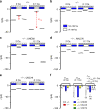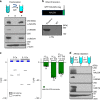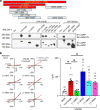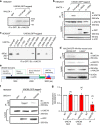Intellectual disability-associated UNC80 mutations reveal inter-subunit interaction and dendritic function of the NALCN channel complex
- PMID: 32620897
- PMCID: PMC7335163
- DOI: 10.1038/s41467-020-17105-8
Intellectual disability-associated UNC80 mutations reveal inter-subunit interaction and dendritic function of the NALCN channel complex
Abstract
The sodium-leak channel NALCN forms a subthreshold sodium conductance that controls the resting membrane potentials of neurons. The auxiliary subunits of the channel and their functions in mammals are largely unknown. In this study, we demonstrate that two large proteins UNC80 and UNC79 are subunits of the NALCN complex. UNC80 knockout mice are neonatal lethal. The C-terminus of UNC80 contains a domain that interacts with UNC79 and overcomes a soma-retention signal to achieve dendritic localization. UNC80 lacking this domain, as found in human patients, still supports whole-cell NALCN currents but lacks dendritic localization. Our results establish the subunit composition of the NALCN complex, uncover the inter-subunit interaction domains, reveal the functional significance of regulation of dendritic membrane potential by the sodium-leak channel complex, and provide evidence supporting that genetic variations found in individuals with intellectual disability are the causes for the phenotype observed in patients.
Conflict of interest statement
The authors declare no competing interests.
Figures








References
Publication types
MeSH terms
Substances
Grants and funding
LinkOut - more resources
Full Text Sources
Other Literature Sources
Molecular Biology Databases

